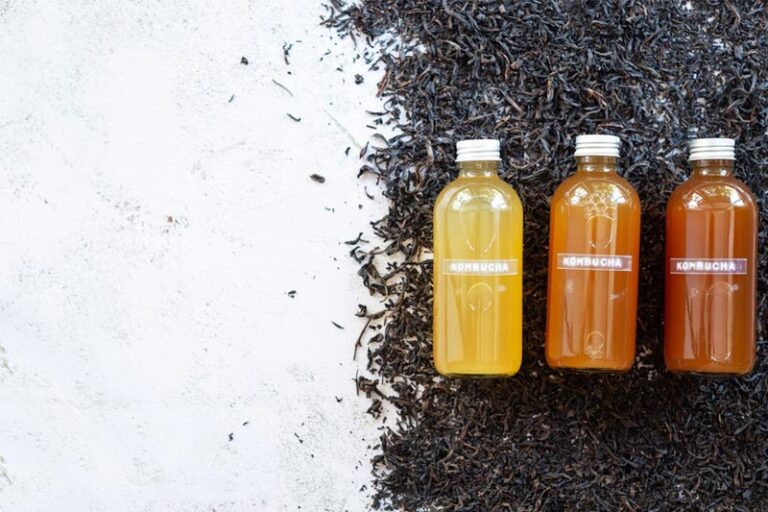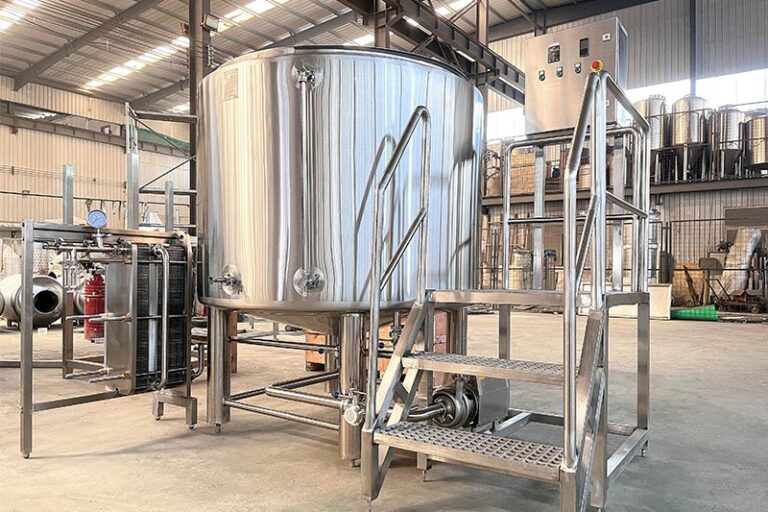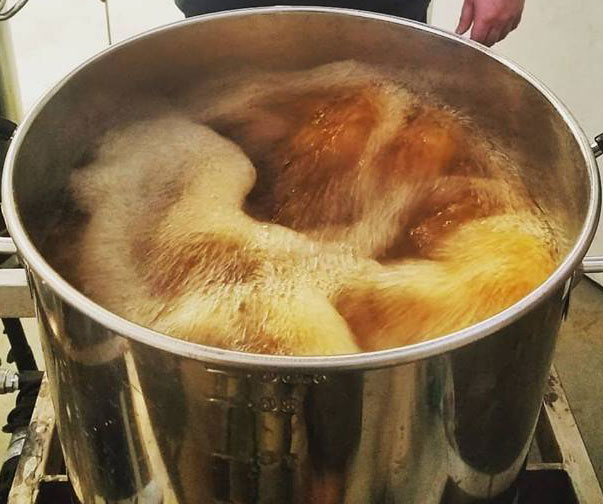In the production process of Kombucha, it is crucial to choose the right brewing equipment. Kombucha is not only welcomed by its unique flavor and potential health benefits but also requires precise equipment support. Correct equipment can not only improve production efficiency but also ensure the quality and consistency of the final product. Kombucha is a fermented drink made of fermented sweet tea. It is widely loved because of its unique flavor and potential health benefits. Choosing the right Kombucha brewing equipment for brewers is critical to producing high -quality products.
What is Kombucha Brewing?
Kombucha is a fermented beverage made by mixing sweet tea with a community of microorganisms known as SCOBY or “tea bacteria” to ferment it. This beverage has gained worldwide popularity due to its unique flavor and potential health benefits. The process of brewing kombucha involves several key steps, including preparation of the sweet tea, fermentation, filtration, and maturation.
- Preparing Sweet Tea: The main ingredients of kombucha are tea leaves and sugar. Traditionally, black or green tea is used, but other types of tea can also be used. Sugar is added to the hot tea to provide the carbohydrates needed for fermentation. The sugar will be converted by microorganisms into other chemicals during the fermentation process.
- Inoculate with SCOBY: Pour cooled sweet tea into a clean fermentation vessel and add SCOBY and a moderate amount of the original kombucha liquid (as a starter). This helps to introduce beneficial microorganisms and promote the fermentation process.
- Fermentation: During the fermentation process, SCOBY converts sugar into acetic acid, lactic acid, and other organic acids while producing gas and a small amount of alcohol, giving kombucha its distinctive tartness and effervescence.
- Filtering and Flavoring: Kombucha can be flavored with a variety of flavors, such as fruits, herbs, or spices, to suit individual tastes. Flavoring is usually done after straining and may require additional fermentation time to blend the flavors.
- Ripening and Bottling: After flavoring, kombucha usually requires a secondary fermentation to further develop flavors and add effervescence. Dispense the ripened kombucha into bottles and make sure the bottles are well sealed to maintain the bubbles and freshness.

Main types of brewing equipment for Kombucha
Fermenter
Fermentation tanks are used to accommodate sweet tea and SCOBY (Symbiotic Colony of Bacteria) for fermentation. The choice of a fermentation tank directly affects the efficiency of the fermentation process and the quality of the Kombucha.
- Material: Common materials include glass, stainless steel, and food-grade plastic. Glass tanks are transparent and easy to observe the fermentation process; stainless steel tanks are durable and easy to clean; food-grade plastic tanks are lightweight and economical.
- Capacity: Choose the right capacity according to the scale of production. Small domestic fermenters are usually 1-5 liters, while larger capacity tanks are available for commercial production.
- Design: Tanks need to be well sealed to prevent external contamination and support the venting of fermentation gases.
Agitation system
A stirring system is used to stir the fermentation liquid periodically to ensure a uniform mixing of SCOBY and sweet tea.
- Stirrer type: Manual stirrers are suitable for small-scale production, while automatic stirring systems are suitable for large-scale production.
- Design: Stirrers need to have anti-corrosion properties to adapt to the acidic environment of fermentation liquids.
Temperature control system
Ensure that the temperature during Kombucha fermentation is maintained in the appropriate range, usually 20-30°C, to promote proper fermentation of SCOBY. Heaters provide temperature elevation, especially in cold environments. They may include electric heaters or tropical heating pads. Coolers are used to reduce the temperature and prevent the negative effects of overheating on fermentation. Coolers are usually equipped with a temperature control system to ensure that the ambient temperature is stabilized.
Temperature monitoring is equipped with a thermometer or temperature control system to monitor and adjust fermentation temperatures in real-time.
Filtration System
Removal of Solid ImpuritiesAt the end of fermentation, a filtration system is used to remove SCOBY, sediment, and other solid impurities to ensure the clarity of the kombucha.
Filter Type:
- Paper Filter: commonly used for homemaking, simple and easy to use.
- Activated Carbon Filter: used to remove impurities and off-flavors to improve the taste of kombucha.
- Stainless steel filter: durable and reusable, suitable for commercial production.
Filling and Packaging Equipment
Fill the fermented Kombucha into bottles and encapsulate it ready for sale.
- Automated Filling Machine: suitable for large-scale production to improve filling efficiency and accuracy.
- Semi-automatic filling machine: suitable for small and medium scale production, reducing manual operation but still requiring some human intervention.
- Bottle Capping Machine: Ensure the bottle mouth is well sealed to prevent gas leakage and contamination. Including capping machines and capping machines.
- Labeling machine: automated equipment for applying labels on bottles to improve production efficiency and enhance market recognition.
Cleaning System

How to choose the right kombucha brewing equipment?
Determine the scale of production
- Home brewing: If you plan to make small batches of kombucha in a home environment, choose small equipment such as a 1-5 liter glass or food grade plastic fermenter. Simple hand blenders and small filters are also suitable.
- Commercial production: If you plan to produce kombucha on a large scale, choose a fermenter with a larger capacity (tens to hundreds of liters), as well as automated stirring and filling equipment. Temperature control systems and data logging thermometers are also important to ensure consistent and efficient production.
Selection of Fermenters
- Material: Glass jars are transparent and easy to observe the fermentation process, but are more fragile. Suitable for home brewing. Stainless steel tanks are durable, easy to clean and suitable for commercial production. Make sure you choose food grade stainless steel to avoid acidic liquids reacting with the metal. Food grade plastic tanks are lightweight and economical, but make sure the plastic material is safe for acidic environments.
- Capacity: Choose the right capacity for your production needs. Small home tanks are suitable for experimentation and personal use, while large commercial tanks are suitable for mass production.
- Design: Choose a tank with a good seal that prevents external contamination and supports the venting of fermentation gases. Consider the opening design of the tank for easy operation and cleaning.
Configuration of temperature control system
- Temperature control requirements: Ensure that the temperature inside the fermenter is maintained in the appropriate range (20-30°C). Choose a system equipped with heaters and coolers to allow regulation under different environmental conditions.
- Thermometers: Choose high-precision digital thermometers or thermometers with data logging capabilities for accurate monitoring of fermentation temperatures.
Choice of filtration system
- Paper filter: suitable for home use, simple and easy to use.
- activated charcoal filter: removes impurities and odors, suitable for improving the taste of kombucha.
- Stainless steel filter: durable and reusable, suitable for commercial production.
Ease of use and maintenance of the equipment
- Ease of use: choose equipment that is simple to operate, easy to install and dismantle, and less difficult to operate and maintain.
- Maintenance Requirements: Choose equipment that is durable and ensure easy accessory and cleaning processes to reduce maintenance costs.
Choosing the right kombucha brewing equipment requires a comprehensive consideration of the scale of production, the material and capacity of the fermenter, the temperature control system, mixing and filtration equipment, and other processes. By carefully selecting and configuring these equipment, the production process can be optimized, product quality can be improved and efficient production can be achieved.

FAQ
What is kombucha brewing equipment?
Kombucha brewing equipment refers to the specialized equipment used to make kombucha, including fermentation tanks, temperature control systems, stirrers, filters, filling and packaging equipment, etc. These equipment help to control the fermentation process, maintain temperature, filter impurities, and ultimately fill and package kombucha. This equipment helps to control the fermentation process, maintain the temperature, filter impurities, and ultimately fill and pack the kombucha to ensure product quality and production efficiency.
What is the importance of a temperature control system?
The temperature control system is critical to the fermentation process of kombucha. The optimal fermentation temperature for kombucha is usually between 20-30°C. The temperature control system helps to maintain this temperature range. The temperature control system helps to maintain this temperature range to ensure the activity and fermentation of SCOBY. Temperature control systems typically include heaters, coolers, and thermometers.

